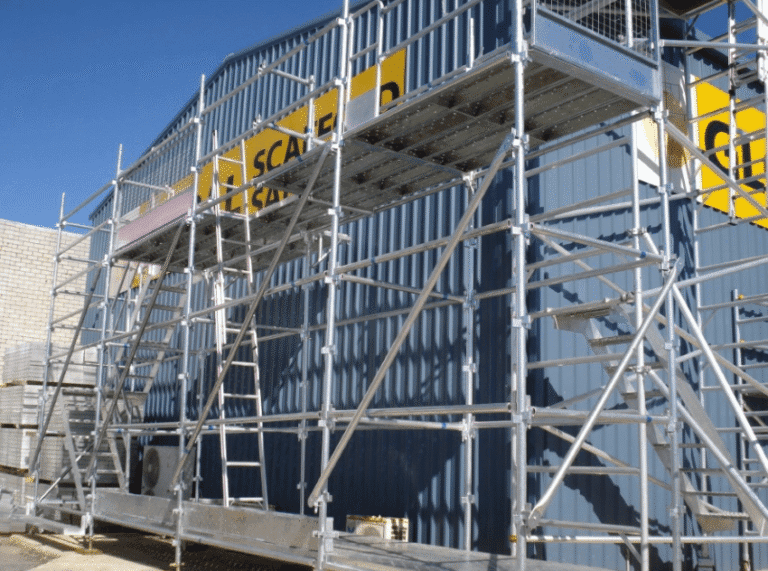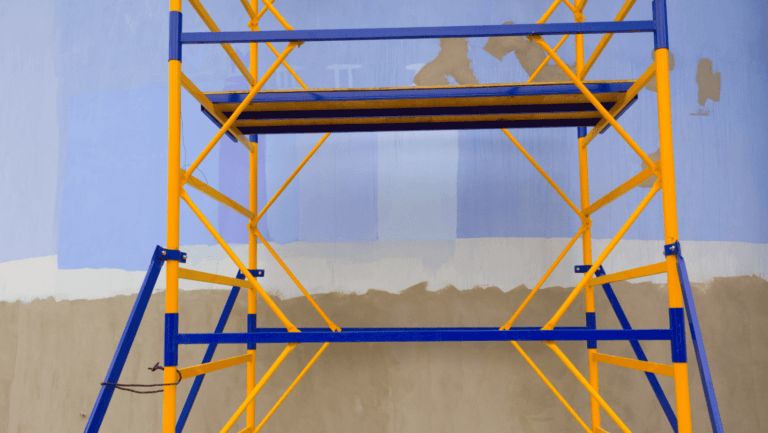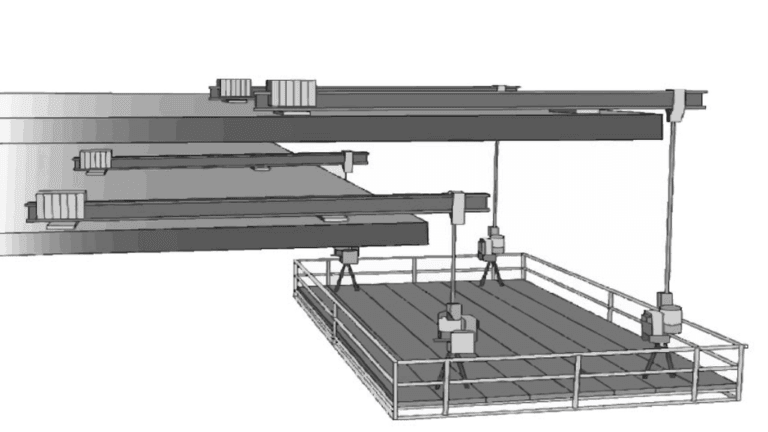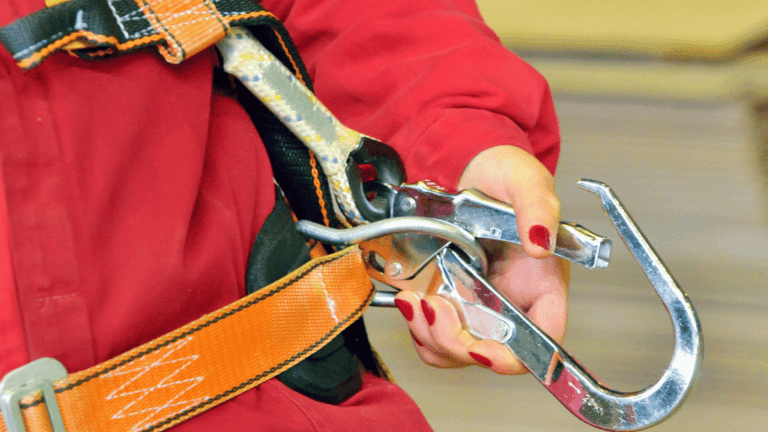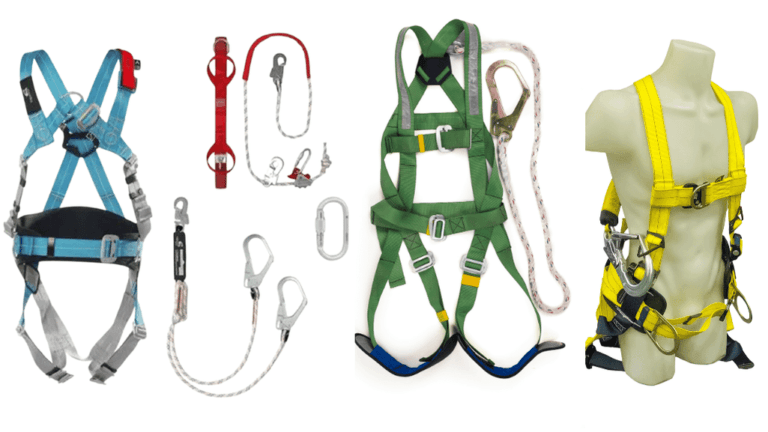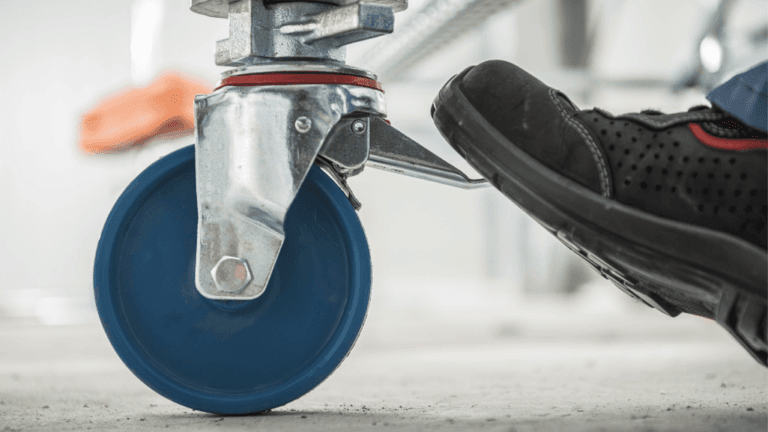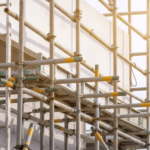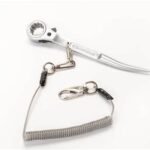Phone:
(+65)8319-0742
Scaffolding is key in the construction world. Almost 65 percent of construction workers, or 2.3 million people, use scaffolds, OSHA says. Yet, scaffolding accidents cause about 4,500 injuries and 52 deaths each year. These accidents also lead to $90 million in lost workdays.
To avoid these accidents, workers must set up scaffolds correctly and take the right precautions. This is crucial for scaffold safety.
Most scaffolding accidents happen when workers fall, get hit by falling objects, or when scaffolds collapse. The U.S. Bureau of Labor Statistics says this is often because of bad planking. To lower these risks, OSHA suggests using personal fall arrest systems, guardrails, and protective gear.
Workers should also put up toe-boards, screens, or guardrails to stop objects from falling. This helps prevent harm.
Setting up scaffolds right is essential for safety. Make sure they are stable, installed correctly, and follow expert advice. Employers must train workers on fall protection, hazard recognition, and scaffold safety.
Key Takeaways
- Follow proper setup procedures and take necessary precautions to ensure scaffold safety
- Use personal fall arrest systems, guardrails, and protective equipment to prevent falls
- Install toe-boards, screens, or guardrail systems to prevent objects from falling off scaffolds
- Ensure adequate support, stability, correct installation, and suitable materials when using scaffolds
- Provide comprehensive training on fall protection, hazard recognition, and specific scaffold safety measures to all workers
Understanding Scaffolding Basics
Scaffolding is key in construction, giving workers a safe place to work high up. It’s important to know the basics of scaffolding. This includes the different types and how much weight they can hold.
Types of Scaffolds
There are many types of scaffolds for different construction needs. Here are some common ones:
- Supported Scaffolds: These are built on the ground and are stable. They’re used when workers need to reach different levels of a building.
- Suspended Scaffolds: These platforms hang from above. They’re great for tasks like window washing and painting on tall buildings.
- Rolling Scaffolds: Also called mobile scaffolds, these have wheels. They’re perfect for moving around the site.
Weight Capacity and Load Limits
It’s vital to know how much weight a scaffold can handle. This keeps everyone safe. OSHA says scaffolds must support four times the maximum load without breaking.
Workers need to know the scaffold’s weight limit. Overloading can cause it to fail. This could lead to serious accidents. Always follow the manufacturer’s weight limits and spread the load evenly.
Every year, about 4,500 people get hurt from scaffolding. These accidents cost around $90 million in lost workdays.
To keep the scaffold stable, workers should follow the right assembly and disassembly steps. They should also stay away from electrical dangers and check the scaffold for damage often.
| Scaffold Tag Color | Meaning |
|---|---|
| Green | Safe for use after inspection |
| Yellow | Modifications introduce specific work requirements |
| Red | Unsafe for use |
Knowing the basics of scaffolding helps prevent accidents. It’s all about understanding the types and their weight limits.
Proper Scaffold Assembly and Dismantling
Scaffolding is key in construction, with most workers using them often. But, setting up and taking down scaffolds wrong can cause big problems. It leads to about 4,500 injuries and 60 deaths each year. It’s vital to follow the right steps to keep workers safe.
Trained Personnel for Setup and Teardown
Only people who know what they’re doing should handle scaffolds. They need to know the rules and how to follow them. Training is key for those working with scaffolds, teaching them how to handle and dismantle safely.
Following Manufacturer’s Instructions
Every scaffold has its own set of rules for putting it up and taking it down. Workers must follow these rules to make sure the scaffold is safe. Not following these instructions can lead to accidents. It’s important for workers to understand these rules well.
Maintaining Safe Distances from Electrical Hazards
Working near electrical dangers is risky when setting up or taking down scaffolds. Scaffolds should be at least 10 feet away from power lines. If you must get closer, turn off the power first. Workers should also watch out for other electrical dangers and avoid them.
| Safety Measure | Description |
|---|---|
| Trained Personnel | Only trained and competent individuals should assemble and dismantle scaffolds |
| Manufacturer’s Instructions | Workers must closely follow the specific instructions provided by the scaffold manufacturer |
| Electrical Hazard Distance | Maintain a minimum distance of 10 feet between scaffolds and power lines |
Using trained people, following the manufacturer’s rules, and staying away from electrical dangers can lower accident risks. Employers and workers must focus on safety. This way, everyone on the construction site can stay safe.
Regular Scaffold Inspections
Regular scaffold inspections are key to keeping workers safe and avoiding accidents. OSHA says a competent person must check the scaffold before each shift and after any changes. These checks help spot hazards and defects that could harm workers.
The competent person should look closely at the scaffold. They should check for wear, loose parts, and the state of planks, guardrails, and toe boards. If they find any problems, the scaffold must be taken out of use until it’s fixed.
To ensure scaffold safety, inspections by a competent person should be conducted before each new shift, after any incident affecting structural integrity, and whenever a scaffold is erected, dismantled, moved, or altered, underscoring the importance of regular inspections in preventing accidents.
Some important things to check during inspections include:
- Inspecting weight restrictions and ensuring they are not exceeded
- Checking access points to ensure they are not blocked and are safe to use
- Verifying that guardrails and toe boards meet the required height specifications
- Examining the scaffold for any signs of damage, corrosion, or structural issues
| Inspection Frequency | Key Points to Check |
|---|---|
| Before each work shift | Wear and tear, loose connections, missing parts, condition of planks, guardrails, and toe boards |
| After any event affecting structural integrity | Damage, corrosion, or structural issues caused by incidents or weather events |
| When erected, dismantled, moved, or altered | Proper assembly, stability, and compliance with manufacturer’s instructions and OSHA standards |
Regular scaffold inspections and quick action on hazards or defects can greatly lower accident risks. Using a safety management system, like EHS Insight, can make inspections easier and keep you in line with OSHA’s standards.
Fall Protection Measures
Working on scaffolds at heights requires proper fall protection. OSHA rules say fall protection is needed for scaffolds over 10 feet high. Not following these rules often leads to scaffolding being among the top OSHA violations.
To stop falls, scaffolds need guardrails on all sides and ends. Companies often choose safety railings because they’re easy to set up. In masonry, rails are made from 2x4s attached to the uprights.
Guardrails and Toe Boards
Guardrails are the first defense against falls. They must be 42 inches (±3 inches) above the platform. Mid-rails are halfway between the top rail and the platform. Toe boards, at least 3.5 inches high, keep tools and materials from falling.
Personal Fall Arrest Systems (PFAS)
When guardrails aren’t possible, personal fall arrest systems (PFAS) are needed. PFAS include a harness, lanyard, and anchor point. Workers on suspended scaffolding, like for window washing, must always be tied off. It’s key to remember that using the scaffold as an anchor in four-point suspended scaffolding needs the manufacturer’s approval.
| Fall Protection Requirement | Height |
|---|---|
| General Industry | 4 feet or more |
| Construction Industry | 6 feet or more |
| Scaffolding | 10 feet or more |
| Steel Erection* | 15 feet or more |
*Except for specific activities like structural component connection and controlled decking zones.
Workers must be trained on fall protection equipment. They need to know how to wear and use harnesses, lanyards, and other PFAS parts. Regular checks are vital to keep equipment safe and properly anchored.
Fall protection is not just a regulatory requirement; it is a moral obligation to protect the well-being of our workers.
Maintaining a Safe Working Environment
Creating a safe work area is key in construction, especially with scaffolding. Over 62% of workers face heights where they could easily fall. It’s vital to follow safety rules to avoid accidents and injuries. Employers must use the best methods and follow OSHA rules to keep their workers safe and productive.
Keeping Scaffolds Clean and Organized
Keeping scaffolds tidy is crucial for safety. A messy scaffold can lead to tripping over tools or materials. It’s important to store equipment and supplies correctly to prevent accidents. Regular cleaning and organization improve safety and work efficiency.
OSHA has strict rules for scaffolding safety, like weight limits and how platforms are built. Following these rules and organizing scaffolds well helps make workplaces safer for everyone. This is done by using a systematic approach to scaffold organization.
Preventing Slips and Falls
Slips and falls are common on construction sites, especially on scaffolds. To stop these, it’s important to have a stable footing and keep the scaffold dry. Workers should wear shoes that grip well and use safety gear when needed.
Employers should also use safety barriers like guardrails and midrails on scaffolds. These barriers stop workers from falling off and getting hurt badly. By using the right safety gear and training workers, companies can make their workplaces safer.
| Safety Measure | Benefit |
|---|---|
| Regular scaffold inspections | Identifies defects and wear and tear that could lead to accidents |
| Fall protection equipment | Prevents falls from scaffolds, reducing the risk of severe injuries or fatalities |
| Proper scaffold access | Ensures safe entry and exit from the scaffold, minimizing slips and falls |
| Employee training | Educates workers on proper scaffold usage and safety protocols, promoting a culture of safety |
By focusing on a clean, organized, and safe work area, companies can greatly improve scaffold safety. Investing in training, safety gear, and regular checks is key. As the construction world changes, employers must keep up with new safety rules and practices. This ensures workers can do their jobs safely and confidently on scaffolding systems.
Weather Considerations for Scaffold Safety
Weather conditions are key to scaffold safety. High winds, heavy rain, snow, and ice can make scaffolds slippery and unstable. This increases the risk of accidents and injuries.
It’s important to watch weather forecasts and updates on temperature and wind speed. When winds hit 40 mph, workers should not use scaffolds. They should be tied to buildings to prevent tipping. In winter, icy conditions raise the risk of slipping and falling, so anti-slip coatings or mats are needed.
Cold, windy weather can also affect scaffolding stability. Some materials may become brittle in cold temperatures. This means scaffolding needs thorough checks before use, especially in winter.
“Proper training and education for employees on working safely on scaffolding in winter conditions is essential to mitigate risks and ensure adherence to safety protocols.” – John Smith, Safety Manager at ABC Construction
Rain can also pose health and safety risks during construction. Work often continues in bad weather. Safety measures like regular scaffold checks, non-slip footwear, and guardrails can help prevent accidents. Metal scaffolding is better than wood because it doesn’t deteriorate in rain.
| Scaffold Type | Cal/OSHA Regulations | Height Limit (ft.) |
|---|---|---|
| Metal Scaffolds | 1644 | – |
| Tower and Rolling Scaffolds | 1646 | – |
| Ladder Jack Scaffolds | 1648 | – |
| Outrigger and Bracket Scaffolds | 1645 | – |
| Horse Scaffolds | 1647 | – |
| Window Jack Scaffolds | 1654 | – |
| Wood (Frame/Post) Scaffolds | 1643, 1644 | 60 |
| Tube & Coupler/Tubular (Welded) Scaffolds | 1643, 1644 | 125 |
To work safely in bad weather, workers need the right PPE. This includes hard hats, non-slip footwear, waterproof jackets, and full-body harnesses. Regular training and awareness programs are also key. If scaffold boards get too slippery, work should stop to ensure safety.
Proper Access and Egress
Ensuring safe and efficient access to and from scaffolds is key to scaffold safety. Proper access and egress prevent accidents and boost productivity. Workers need designated access points, like ladders or stair towers, to safely reach the platform.
Designated Access Points
It’s vital to have clear, safe access points for scaffolds. These spots should be marked and free from clutter. Ladders, stair towers, or ramps are often used, based on the scaffold’s height.
OSHA rules say access ladders must be vertical and have rest platforms every 9 meters.
Ladder Safety
Ladders are a common way to get on and off scaffolds. But, they must be used right to keep workers safe. Ladders should reach 900 millimeters above the landing and be secure.
Portable ladders need to be sturdy and not have loose rungs. Remember, climbing the scaffold frame is dangerous and should be avoided.
| Ladder Type | Safety Requirements |
|---|---|
| Access Ladders (Fixed) | Must be vertical and have rest platforms at intervals not exceeding 9 meters |
| Portable Ladders | Free from defective or loose rungs, placed on firm and level footing |
| Ladders for Access/Egress | Extend at least 900 mm above landing surface, secured to prevent movement |
Ramps and stairs can also be used for access. Ramps should not be too steep and have cross-cleats every 500 millimeters. Stairs need a clear width of 500 millimeters and a wooden handrail.
Proper access and egress are essential, ensuring safe and secure access points to and from the scaffold.
Following these rules and training workers on access and egress can greatly reduce accidents. This makes the workplace safer for everyone.
Comprehensive Training for Scaffold Users
Ensuring worker safety on scaffolds starts with comprehensive training. All scaffold workers need thorough initial training. This should cover scaffold types, inspection, safe use, fall protection, and emergency plans. Regular refresher courses are also key to keep safety knowledge sharp.
A scaffold user training program should focus on key safety aspects. For example, it might include scaffold types, hazards, inspection tags, and safe work practices. Participants should pass multiple-choice quizzes to show they understand the material well.
Initial Training and Regular Refreshers
Initial training is vital for all scaffold users. It should be at least 4 hours long and face-to-face. Workers should earn CEUs after passing the course and filling out an evaluation form.
| Course Details | Requirements |
|---|---|
| Duration: 4 Hours | Pass all knowledge checkpoints with 100% |
| Training Mode: Face to Face | Fill out course evaluation form |
| CEUs Earned: 0.10 | Recertification recommended every 5 years |
Regular refresher courses are needed every five years. They keep workers updated on safety and regulations. A 40-minute refresher course by Circle Safety & Health Consultants meets OSHA’s competent person training.
Encouraging a Culture of Safety
Creating a safety culture is crucial. Workers should feel free to report safety concerns. Quick action should be taken to fix any issues.
Employers must retrain workers when the worksite or equipment changes. Ongoing safety education and open communication are key. This way, everyone works together to maintain high scaffold safety standards.
In 2020, the Bureau of Labor Statistics Census of Fatal Occupational Injuries reported 52 scaffolding fatalities. This highlights the need for comprehensive training and a strong safety culture to prevent accidents.
when using scaffolds make sure there is
Working with scaffolds requires careful attention to support, stability, and safety. The Bureau of Labor Statistics reported 713 fatal falls to lower levels last year. This includes 48 falls from collapsing structures or equipment and 79 falls to surfaces less than six feet below. To avoid such incidents, workers must focus on safety when using glazing scaffolding and other scaffolds.
Proper Support and Stability
Scaffold safety starts with proper support and stability. Scaffolds must support at least four times the intended load. This includes workers, tools, equipment, and materials. The footings should be on level, solid ground that can handle the loaded scaffold.
Scaffold platforms need to be fully decked, at least 18 inches wide, and secured with scaffold-grade planks. This ensures stability and safety.
Adequate Safety Measures in Place
Bracing, guardrails, midrails, and toe boards are crucial for preventing falls and injuries. Scaffolds over 10 feet need a complete guardrail system with toe boards covering all sides and decks. Personal Fall Arrest Systems (PFAS) provide extra protection against falls.
Correct Installation and Suitable Materials
The scaffold must be installed correctly using the right materials, as recommended by the manufacturer. Scaffolding has a weight capacity, and workers should follow these limits. Using the correct materials and following installation procedures can prevent collapses and hazards.
Expert Guidance and Supervision
Expert guidance and supervision are key to following OSHA regulations and identifying hazards. Proper training and education can prevent falls, falling objects, collapses, and inspection violations. Encouraging a safety culture and regular refresher training can improve scaffold safety on job sites.
| Scaffold Safety Statistics | Number of Incidents |
|---|---|
| Fatal falls to lower levels (2020) | 713 |
| Falls from collapsing structures or equipment | 48 |
| Falls to surfaces less than six feet below | 79 |
| Injuries caused by unsafe scaffolding (2020) | 3,400 |
| Work-related deaths caused by unsafe scaffolding (2020) | 56 |
By focusing on support, stability, safety, correct installation, suitable materials, and expert guidance, workers can reduce accident and injury risks. Remembering these key elements and staying alert on the job site can make the workplace safer for everyone.
Conclusion
Scaffold safety is very important in construction, with many workers getting hurt or killed each year. But, most of these accidents can be stopped by following safety rules, being careful, and getting the right training. OSHA rules say scaffolds must hold at least four times the weight they’re meant for.
It’s also important to check scaffolds often to find and fix weak spots. These weak spots, like broken planks, cause 72% of scaffolding injuries.
Employers must make sure safety rules are followed every day. They need to give workers safety gear like guardrails and safety nets. Only OSHA-certified people should work on scaffolding.
Workers can stop work if they see something unsafe. They can tell their bosses without worrying about getting in trouble.
By focusing on safety, the construction world can make workplaces safer. This means fewer accidents and a better work environment for everyone. It’s key to have a safety-first culture and listen to concerns quickly.
Remember, following safety steps can save lives. For example, a worker died when a ladder fell, and two fell from a collapsed scaffold. Safety is everyone’s job.






